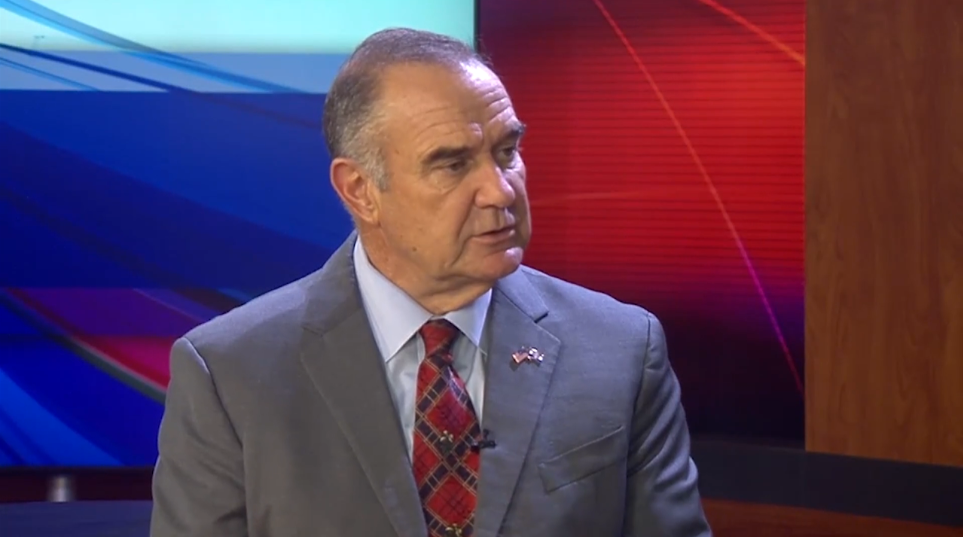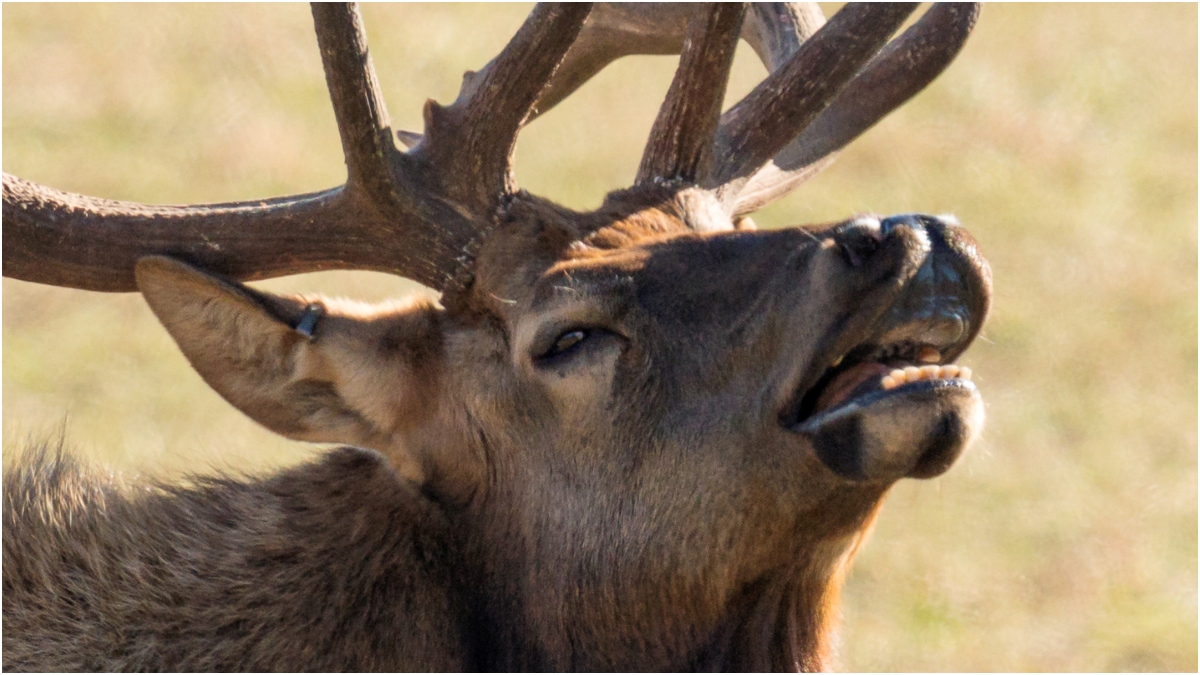Pennsylvania
Pa. lagged in renewable energy growth in past decade, but trend may be reversing | StateImpact Pennsylvania

-
Rachel McDevitt

Rachel McDevitt / StateImpact Pennsylvania
A solar array at the Nittany 1 Solar Farm is seen here in Lurgan Township, Franklin County on Nov. 24, 2020.
A new report ranks Pennsylvania at the bottom of states in terms of renewable energy growth over the last decade.
Out of all 50 states and the District of Columbia, Pennsylvania only beat out Alaska in adding new wind and solar energy. The commonwealth also placed 50th in energy efficiency programs.
Other states known for oil and gas production were able to grow renewables at a much faster pace. The report says Texas is the leader. In 2022, Texas generated 91 times as much solar power as it did a decade before and three times as much wind.
The analysis from PennEnvironment shows the commonwealth had little growth in wind and tripled solar energy since 2013, with most of the growth happening in 2019.
The country as a whole doubled wind power and saw a 12-fold increase in solar in the same time frame.
Ellie Kerns, climate and clean energy associate with the PennEnvironment Research & Policy Center, said the group is advocating for a switch to 100% renewables by 2050.
“But in the last 10 years, we only brought online enough renewables to power less than 2% of Pennsylvania’s homes, and continue to purchase just 3% of our electricity from renewable sources,” Kerns said.
Doug Neidich, CEO of solar company GreenWorks Development, says one reason is that Pennsylvania met its goal for renewable energy two years ago.
“Our solar renewable energy certificate values–the only incentive that Pennsylvania offers for solar–have slid more than 30 percent in the last six months, and they’re going to continue to slide.”
Bills in the General Assembly that would update the state’s renewable energy goals and improve energy efficiency standards have not been called up. Utility companies in Pennsylvania must buy 8% of their energy from renewable sources under the state’s current standards.
Rep. Patty Kim (D-Dauphin) said a measure to help schools install solar that passed the Democratic-controlled state House this summer may have the best chance of becoming law of renewables-focused bills this session.
“[It’s] bipartisan. Everybody likes saving money. I think that’s the lowest hanging fruit in terms of which bill will be passed,” Kim said.
Solar energy growth in Pennsylvania has outpaced national growth in more recent years, according to Caitlin Connelly, an analyst with the energy research group Wood Mackenzie.
“When we look at just the residential solar segment, national growth has averaged 22.5% annually since 2018. Residential solar growth in PA since 2018 has averaged 32% annually on average,” Connelly said.
The group’s Q3 2023 Solar Market Insight report shows Pennsylvania is the 14th largest residential solar market in the U.S. based on total solar capacity as of the second quarter of this year. It also notes the state has seen a large uptick in utility-scale projects this year.
Pennsylvania has a long history of fossil fuel extraction, and Connelly said politics have been an obstacle to renewables growth in the state.
She points to community solar as an example. These projects would allow people who can’t install solar on their property to directly subscribe to a nearby solar field. Bills to allow it in the past few years have had bipartisan backing, but have not made it to the governor’s desk.
“Early optimism resulted in a pre-development pipeline of several hundred megawatts, so developers were hopeful the legislation would pass. However, there has been very little progress or momentum toward finalizing the bill over the last two years,” Connelly said.
The PennEnvironment report notes Pennsylvania performed better in electric vehicles, ranking 10th in additional EVs sold and 11th in EV charging stations added.
PennEnvironment is urging the legislature and Shapiro Administration to grow clean energy by taking advantage of tax credits and federal grants from last year’s Inflation Reduction Act.
Editor’s Picks

Pennsylvania
New Hope, Pennsylvania and Lambertville, New Jersey host first-ever restaurant week

Calling all foodies! Restaurant Week in Lambertville, New Jersey, and New Hope, Pennsylvania, kicks off on Monday, Jan. 13.
In reality, diners can take advantage of special meals and discounts for two weeks at restaurants in both riverfront communities.
Unfortunately, the New Hope-Lambertville Toll-Supported Bridge is also shut down to all motor and pedestrian traffic for the next two weeks for repairs. But business owners hope the closure doesn’t deter people from coming out to eat.
“Lambertville and New Hope are known as sister cities separated by the Delaware River and the river closing has impacted business greatly,” said Vice President of New Hope Chamber of Commerce Mary Brashier. “Typically, we see some impact to the businesses.”
Still, restaurant owners and staff say they’re working hard to create a charming experience for diners.
“A lot of us live in Lambertville and got used to being able to walk over the bridge to come into New Hope,” said Caelin Murphy, the event coordinator at Nektar Wine Bar in New Hope. “Enjoying that beautiful walk, seeing the views of the Delaware.” Murphy said. Nektar is highlighting their favorite tapas dishes during restaurant week.
Across the river in Lambertville, the team at Under the Moon is looking forward to this unique restaurant week.
“Under the Moon is a Spanish-Italian restaurant with wonderful craft cocktails at our bar,” owner Eric Richardson said. “We’ve been in town eight years and Lambertville is a wonderful community, and we appreciate the support of everyone.”
Restaurants in Pennsylvania participating in restaurant week
- OldeStone Steakhouse
- River House at Odette’s
- GreenHouse New Hope
- Havana
- Karla’s
- Nektar Wine Bar
- Ferry + Main Restaurant at the Logan Inn
- Anzu Social
- Italian Cucina
- Martine’s Riverhouse
- The Salt House
- V Spot
- Triumph Brewing Company
Restaurants in New Jersey participating in restaurant week
- Lambertville Station Restaurant and Inn
- Chive Cafe
- Pru Thai
- Under The Moon
- Black Bass Hotel
- Woolverton Inn
- El Tule
- De Floret
- The Starving Artists Cafe
- Local Greek
- Revolution Woodfire Dining
Pennsylvania
Partly to mostly cloudy overnight, partly sunny & seasonable tomorrow in south-central Pennsylvania

Pennsylvania
Native trout prized by anglers is getting nearly $4M in habitat help in N.J., Pa. and N.Y.

Millions of dollars are coming to New Jersey, Pennsylvania and New York waterways to improve habitat for the native Eastern brook trout.
The New Jersey Department of Environmental Protection announced Wednesday it will lead the multi-state partnership to help restore the fish to waterways in parts of all three states.
The grant for $3.5 million was announced by the National Fish and Wildlife Foundation as part of nearly $122.5 million awarded through the America’s Ecosystem Restoration Initiative: America the Beautiful Challenge. This is a competitive grant program funded by President Joe Biden’s Bipartisan Infrastructure Law, other federal conservation programs and private sources.
Recipients agreed to at least $8.7 million in matching contributions for a total conservation impact of $131.1 million spread among 61 grants supporting landscape-scale conservation projects across 42 states, 19 Tribal Nations, and 3 U.S. territories. The match for the Eastern brook trout grant is $389,200, for a total project amount of $3,889,200.
Eastern brook trout, known as brookies, are the official state fish species for New Jersey, Pennsylvania and New York — and considered an indicator of good water quality, the N.J. DEP said in a news release. Prized by anglers, it’s the Garden State’s only native trout species.
Like the lake trout, it’s part of the genus Salvelinus, different from other trout species familiar to local anglers. Rainbow trout are in the genus Oncorhynchus, while brown trout are in the genus Salmo, though all three genera are part of the subfamily Salmoninae in the family Salmonidae.
The grant will fund cold-water conservation projects in priority watersheds over the next four years, including removing barriers such as dams and culverts, enhancing in-stream habitat, restoring floodplain habitat and mitigating upstream stressors that can lead to higher water temperature, according to the release. It is focused on safeguarding the biodiversity of the Appalachian Corridor highlands and streams within the three states, according to the N.J. DEP’s release.
“New Jersey is proud to be part of this effort,” stated New Jersey Environmental Protection Commissioner Shawn M. LaTourette. “This species holds a special place for anglers and anyone who cares about the health of our cold-water streams and lakes.
“We thank the National Fish and Wildlife Foundation for this opportunity and look forward to working with our partner states in developing projects that will enhance habitat not only for Eastern brook trout, but for other cold-water fish species as well.”
Amy Wolfe, director of Trout Unlimited’s northeast coldwater habitat program, told the public radio station WHYY the tri-state initiative is the first of its kind in the region: “Our goal in this will be to focus on projects that can reconnect fragmented habitat and reduce pollution from sediment runoff and from other land use impacts in these areas.”
Biden launched the America the Beautiful Challenge grant program in 2021, setting the nation’s first-ever goal to conserve at least 30% of U.S. lands and waters by 2030, according to the N.J. DEP release.
The program being administered by N.J. DEP Fish & Wildlife is a collaboration with the New York State Department of Environmental Conservation, the Pennsylvania Fish and Boat Commission, Trout Unlimited, the Eastern Brook Trout Joint Venture, the Northeast Association of Fish and Wildlife Agencies, the Wildlife Management Institute and the U.S. Fish and Wildlife Service.
“This initiative is fundamentally about aligning implementation resources with identified projects to help conserve a priority species for all three states and our partners,” stated Pennsylvania Fish and Boat Commission Executive Director Tim Schaeffer. “In so doing, we are affirming a commitment to landscape-level conservation that capitalizes on unprecedented partnerships here in the Northeast.”
Steve Hurst, chief of fisheries for the New York Department of Environmental Conservation, says in the release: “The work that will be accomplished under the America the Beautiful Challenge grant marks a new phase for the already successful joint venture, as states will now use the knowledge compiled over the past 20 years to collectively improve upon the habitat brook trout depend upon in the Delaware watershed.”
Our journalism needs your support. Please subscribe today to lehighvalleylive.com.
Kurt Bresswein may be reached at kbresswein@lehighvalleylive.com.
-

 Politics1 week ago
Politics1 week agoWho Are the Recipients of the Presidential Medal of Freedom?
-

 Health1 week ago
Health1 week agoOzempic ‘microdosing’ is the new weight-loss trend: Should you try it?
-
/cdn.vox-cdn.com/uploads/chorus_asset/file/25822586/STK169_ZUCKERBERG_MAGA_STKS491_CVIRGINIA_A.jpg)
/cdn.vox-cdn.com/uploads/chorus_asset/file/25822586/STK169_ZUCKERBERG_MAGA_STKS491_CVIRGINIA_A.jpg) Technology4 days ago
Technology4 days agoMeta is highlighting a splintering global approach to online speech
-

 News1 week ago
News1 week agoSeeking to heal the country, Jimmy Carter pardoned men who evaded the Vietnam War draft
-

 Science2 days ago
Science2 days agoMetro will offer free rides in L.A. through Sunday due to fires
-

 News1 week ago
News1 week agoTrump Has Reeled in More Than $200 Million Since Election Day
-

 News1 week ago
News1 week agoThe U.S. Surgeon General wants cancer warnings on alcohol. Here's why
-

 World1 week ago
World1 week agoCalls for boldness and stability at Bayrou's first ministers' meeting















